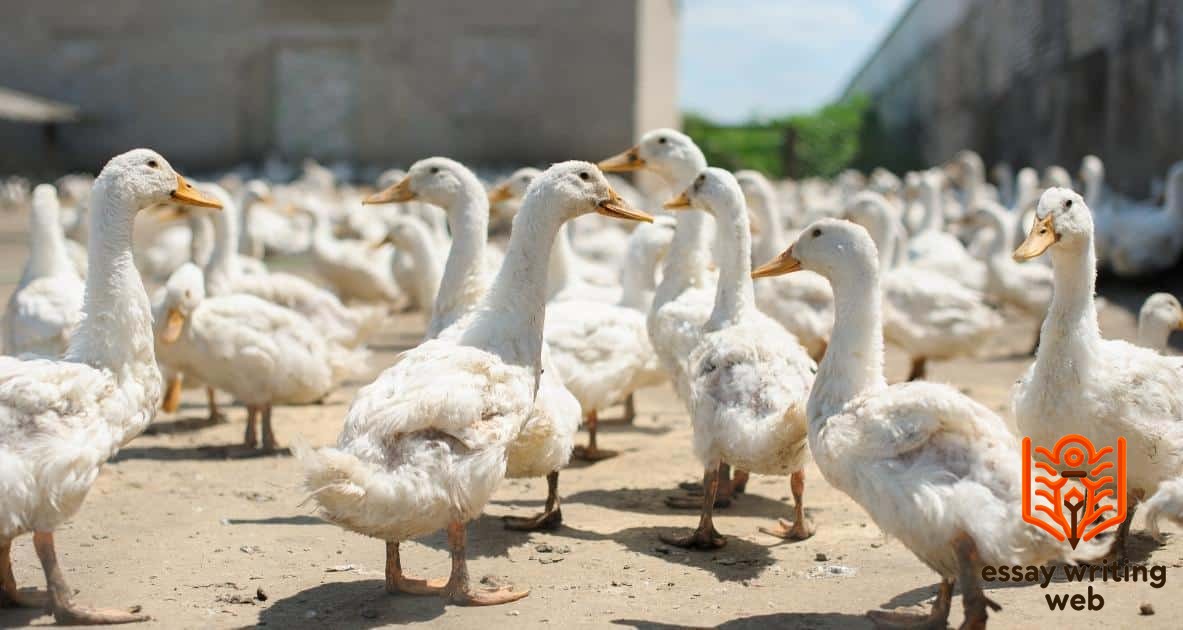 Essay Writing Web
Essay Writing Web
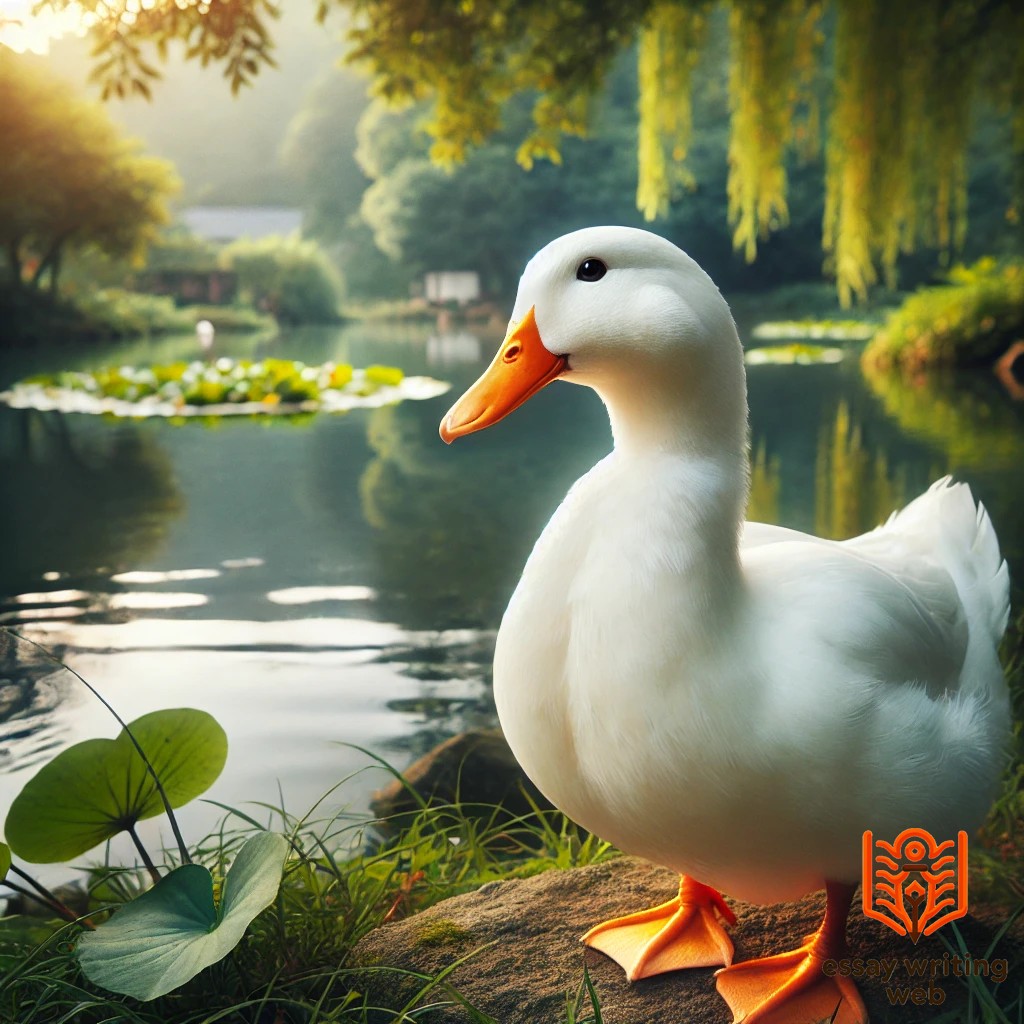
 18-09-2024
18-09-2024
 www.essaywritingweb.com
www.essaywritingweb.com
Ducks are fascinating waterfowl, commonly found in both domestic and wild environments around the world. Belonging to the Anatidae family, ducks are smaller than their relatives such as geese and swans, but they are just as important to ecosystems. Their adaptability to various habitats—ranging from lakes and rivers to coastal marshes—makes them one of the most versatile bird species. Ducks are known for their distinctive quacking sound, but not all species quack; some produce whistles, grunts, or other vocalizations.
One of the most notable features of ducks is their ability to live in water. With webbed feet designed for swimming, ducks are perfectly suited for aquatic life. Their feathers are waterproof due to a special oil they produce and spread over their bodies. This allows them to stay warm and dry, even in the coldest of waters. Ducks also have diverse diets, feeding on plants, insects, fish, and small crustaceans, depending on the species and habitat.
Ducks play an important role in maintaining the health of wetlands and aquatic ecosystems. They help to control insect populations and contribute to the dispersal of seeds through their droppings. Additionally, ducks are important to humans for various reasons. They are raised for their meat, eggs, and feathers, and are also a popular subject in art, literature, and folklore.
In many cultures, ducks symbolize adaptability and resourcefulness due to their migratory patterns and ability to thrive in different environments. Overall, the duck is an essential part of both natural ecosystems and human society, representing a harmonious balance between nature and civilization.
Ducks are medium-sized waterfowl with distinct physical characteristics that help them thrive in aquatic environments. One of the most noticeable features of ducks is their compact, streamlined bodies. This shape, along with their relatively short necks and rounded heads, allows them to move efficiently through water. Their webbed feet are specially adapted for swimming, acting like paddles to propel them forward. These feet, placed slightly farther back on their bodies compared to land birds, make ducks excellent swimmers but give them a distinctive waddling gait on land.
Ducks come in a wide variety of colors and sizes depending on the species. While wild ducks like the mallard may display vibrant hues, such as green on the head and brown or gray on the body, domestic ducks are often solid white, such as the popular Pekin duck. Male ducks, known as drakes, are usually more colorful than females, with brighter plumage that helps them attract mates.
A unique feature of ducks is their waterproof feathers. These feathers are coated with a special oil secreted by a gland near their tail, making them impermeable to water and allowing ducks to remain buoyant while swimming. Underneath the outer layer of feathers, ducks have a layer of down that provides insulation and keeps them warm, even in cold water.
Ducks also have a broad, flat bill that is perfectly suited for their varied diet. This bill contains fine ridges called lamellae, which help ducks filter food from water, further enhancing their adaptation to aquatic life.
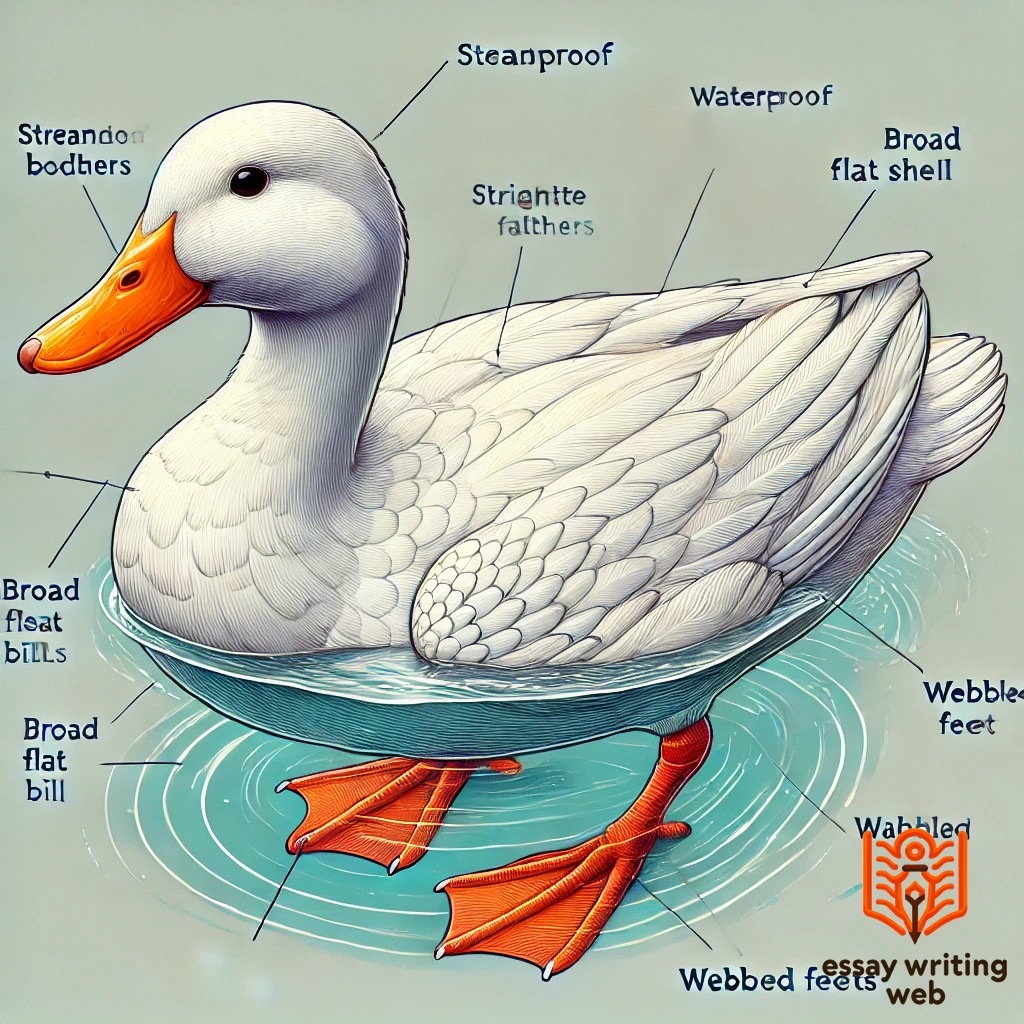
Ducks are a diverse group of birds found all over the world, with numerous species adapted to various habitats. These species can be broadly classified into different types based on their behaviors, habitats, and feeding habits. Understanding the types of ducks gives insight into their ecological roles and adaptations.
One common classification is dabbling ducks, which feed primarily on the surface of the water or tip forward to reach underwater plants. They rarely dive and are often found in shallow freshwater areas like ponds and marshes. Popular examples include the mallard, northern pintail, and teal. Dabbling ducks are known for their ability to take flight quickly from the water without much of a run-up.

Another group is the diving ducks, which are specialized for swimming below the water to catch food. These ducks have a more compact body, and their feet are positioned further back, making them strong swimmers but awkward on land. They dive to find food such as fish, mollusks, and aquatic plants. Canvasbacks, redheads, and scaups are well-known examples of diving ducks. They are often found in deeper lakes, rivers, or coastal waters.
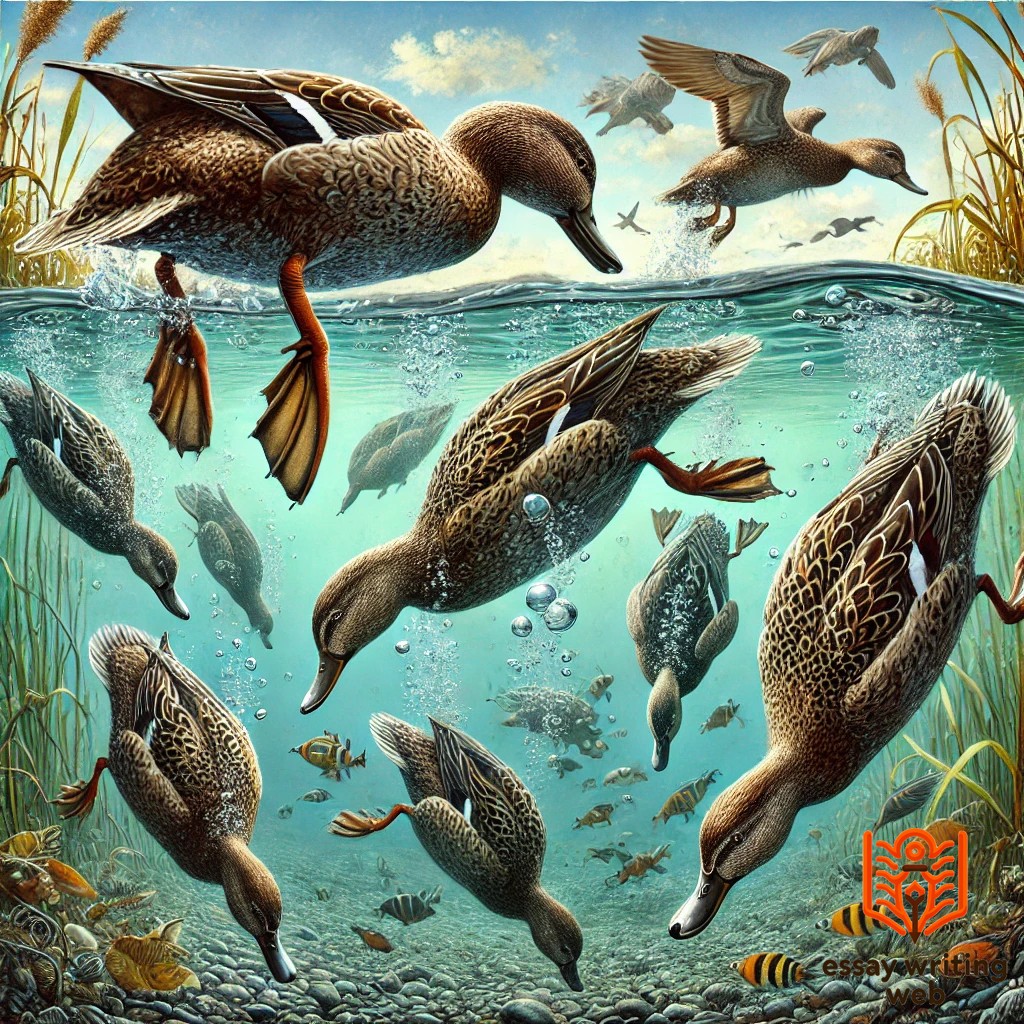
The sea ducks are a subset of diving ducks that primarily live in coastal and marine environments. These include species such as eiders, scoters, and long-tailed ducks. They are well-adapted to cold waters, with dense feathers and strong diving capabilities.
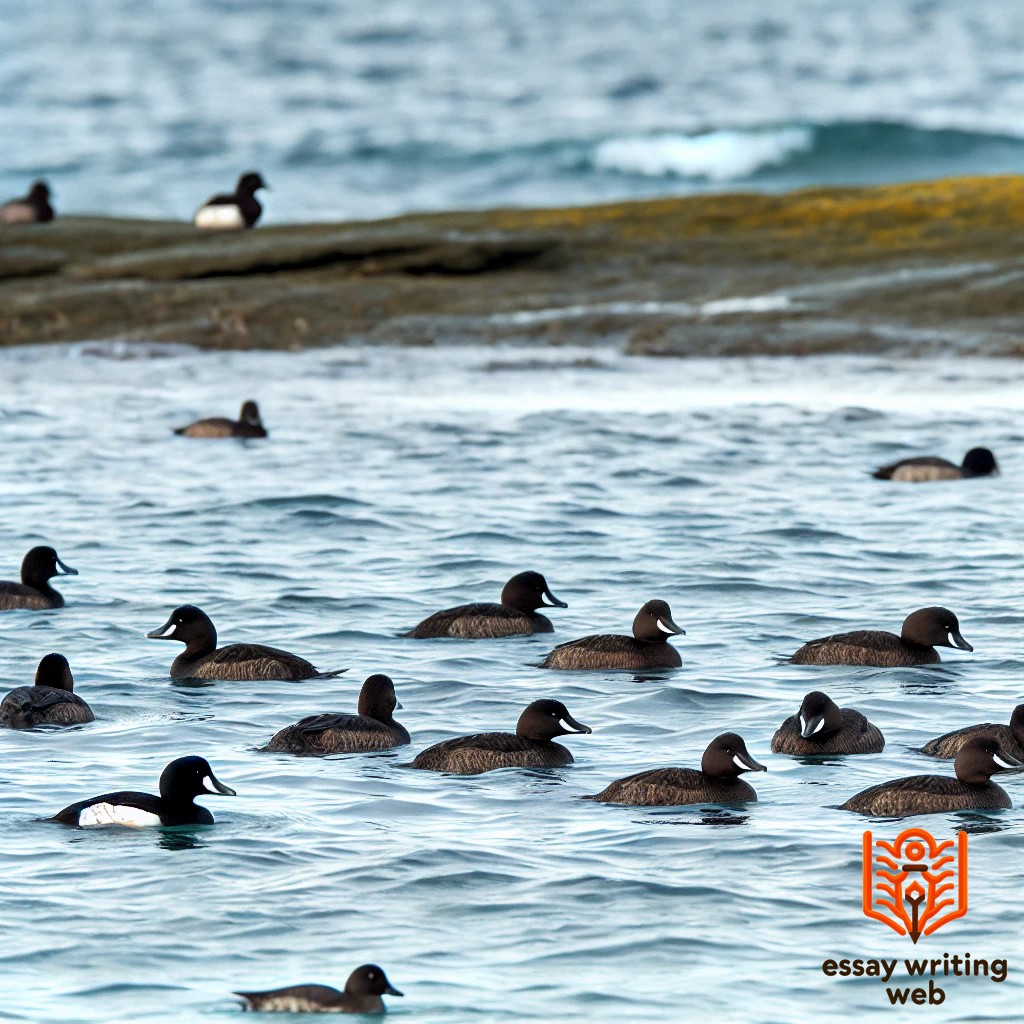
Finally, there are perching ducks, which are often found in wooded areas. They are known for their ability to perch in trees due to their sharp claws. The wood duck is a prominent example, recognized for its colorful plumage and affinity for nesting in tree cavities.

Each type of duck has evolved to thrive in specific environments, showcasing the remarkable adaptability of these birds across diverse ecosystems.
Ducks are highly adaptable birds, found in a wide range of habitats across the globe. Their ability to thrive in diverse environments has made them bird species. Ducks are predominantly associated with aquatic habitats, as their webbed feet and waterproof feathers are well-suited for swimming and living near water bodies.
Ducks can be found in both saltwater and freshwater environments. Freshwater habitats such as lakes, rivers, ponds, and marshes are among the most common places to spot ducks. Many species of dabbling ducks, like the mallard, prefer shallow waters where they can forage for aquatic plants, insects, and small fish. On the other hand, diving ducks, which are adapted for swimming underwater, are often found in deeper lakes and coastal waters.
In coastal regions, sea ducks inhabit brackish or saltwater environments, including estuaries and open seas. These species, such as eiders and scoters, have evolved to withstand cold ocean waters and are usually found in the northern hemisphere near Arctic and sub-Arctic regions.
Ducks are not limited to wetland environments alone. Some species, like the wood duck, prefer wooded areas with nearby water sources, where they nest in tree cavities. Additionally, domestic ducks are raised by humans in farms across the world, further extending their distribution.
From the icy shores of the Arctic to tropical wetlands, ducks have established a global presence, showcasing their remarkable adaptability to various climates and regions. This widespread distribution makes them an integral part of ecosystems on every continent.

Ducks have diverse feeding habits that vary depending on the species, habitat, and availability of food. Most ducks are omnivorous, meaning they eat both plants and animals. Their diet generally consists of aquatic plants, insects, small fish, mollusks, and crustaceans.
Ducks can be categorized based on their feeding techniques. Dabbling ducks, like mallards, feed by tipping forward in shallow water, where they sift through mud and water to find aquatic plants, seeds, and small invertebrates. They are also known to forage on land, grazing on grasses and grains.
In contrast, diving ducks, such as the scaup and canvasback, dive deep underwater to catch fish, crustaceans, and mollusks. They are adept swimmers, using their webbed feet to propel themselves through the water while searching for food.
Some ducks, especially sea ducks like eiders, have specialized diets that include marine organisms such as clams, mussels, and small fish. Their strong bills are well-suited for cracking open hard shells.
Ducks often adapt their feeding habits based on the season and location, ensuring they can survive in a variety of environments. Their flexible diet plays an important role in maintaining the balance of ecosystems by controlling insect populations and aiding in seed dispersal.

Ducks are highly social birds, exhibiting a wide range of behaviors that reflect their adaptability and intelligence. These behaviors are shaped by their need to survive in different environments, their migratory patterns, and their interactions with one another.
One of the most distinctive behaviors of ducks is their strong instinct to migrate. Many species, particularly those in colder regions, migrate seasonally to find warmer climates and more abundant food sources. They travel in groups, often in V-shaped formations, which helps conserve energy during long flights. These migrations can span thousands of kilometers and require precise navigation skills.
Ducks are generally social animals, often forming flocks for feeding, protection, and migration. Living in groups offers safety in numbers, allowing them to detect predators quickly and respond as a unit. They communicate with each other through a range of vocalizations, from quacking to whistling, and use body language like head-bobbing to signal to one another.
When it comes to mating, ducks are typically monogamous for a breeding season, though lifelong pair bonds are rare. Male ducks, called drakes, often display elaborate courtship behaviors to attract females, including vibrant plumage displays and synchronized swimming.
In terms of nesting and raising offspring, female ducks take the lead. They build nests in secluded areas and lay a clutch of eggs, which they incubate until the duckling’s hatch. Once born, the young are able to swim and follow their mother within hours, showcasing their early independence.
This complex social structure and behavioral adaptability help ducks thrive in a variety of habitats worldwide.
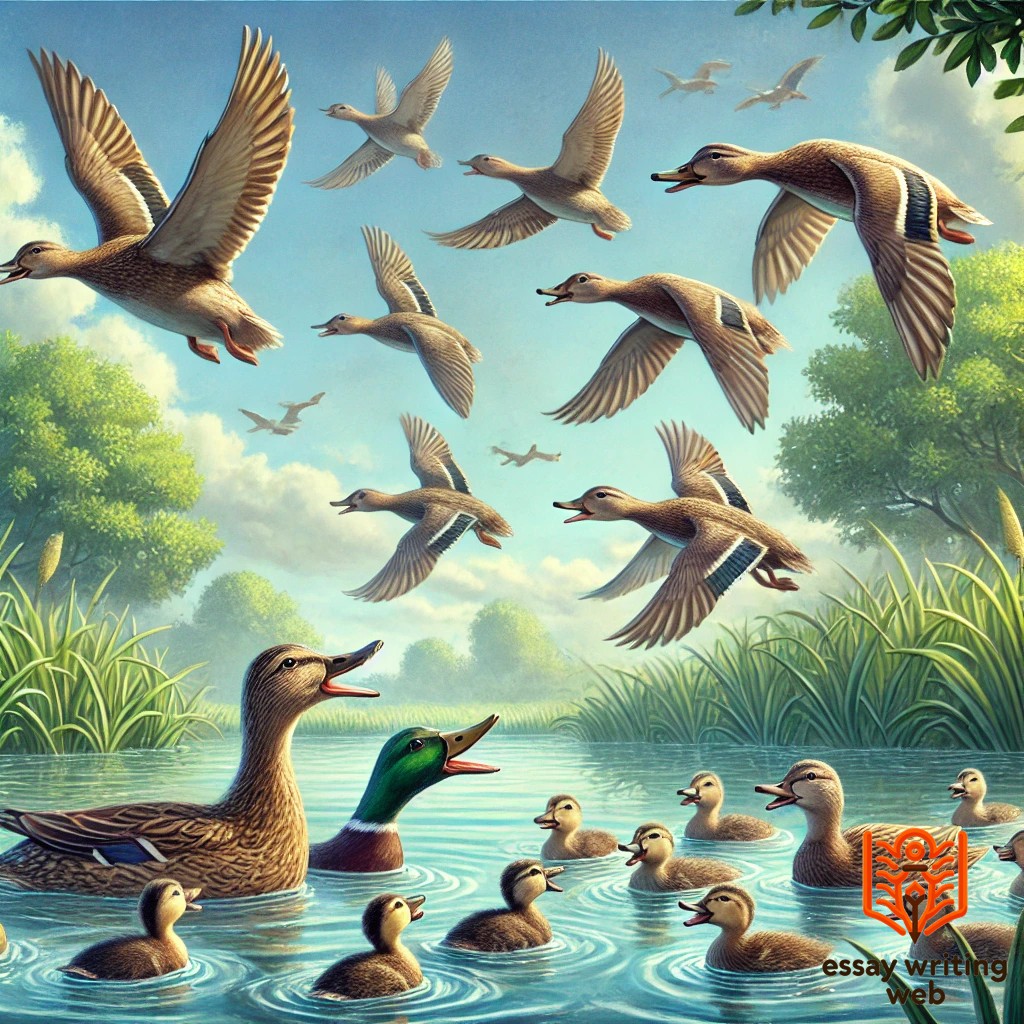
Ducks play a crucial role in maintaining the health and balance of various ecosystems, particularly in wetlands, lakes, rivers, and coastal areas. As omnivores, their feeding habits contribute significantly to the ecosystem's biodiversity and nutrient cycles.
Ducks help regulate insect populations, feeding on aquatic insects and larvae, which keeps these populations in check and prevents overgrowth that could disrupt the balance of aquatic ecosystems. Additionally, by consuming plants, algae, and seeds, ducks assist in maintaining healthy vegetation in wetlands and ponds, preventing the excessive growth of certain plant species that might otherwise dominate.
Another key role ducks play is in seed dispersal. Ducks consume seeds and plant material, which are often transported to new locations through their droppings as they travel between water bodies. This helps in spreading plant species, contributing to the diversity and health of wetlands and surrounding areas.
Ducks also support nutrient cycling. By stirring up sediments while feeding, particularly in shallow waters, they help redistribute nutrients within aquatic systems, which can enhance the productivity of both plants and animals in these environments. This redistribution can also prevent the buildup of detritus, promoting cleaner and healthier water.
Moreover, ducks are an essential part of the food chain. They serve as prey for various predators, including foxes, birds of prey, and larger aquatic animals, making them a vital link in maintaining balanced predator-prey relationships in ecosystems.
In summary, ducks are not only vital to the ecosystems in which they live but also contribute to biodiversity, nutrient cycling, and overall ecosystem health.
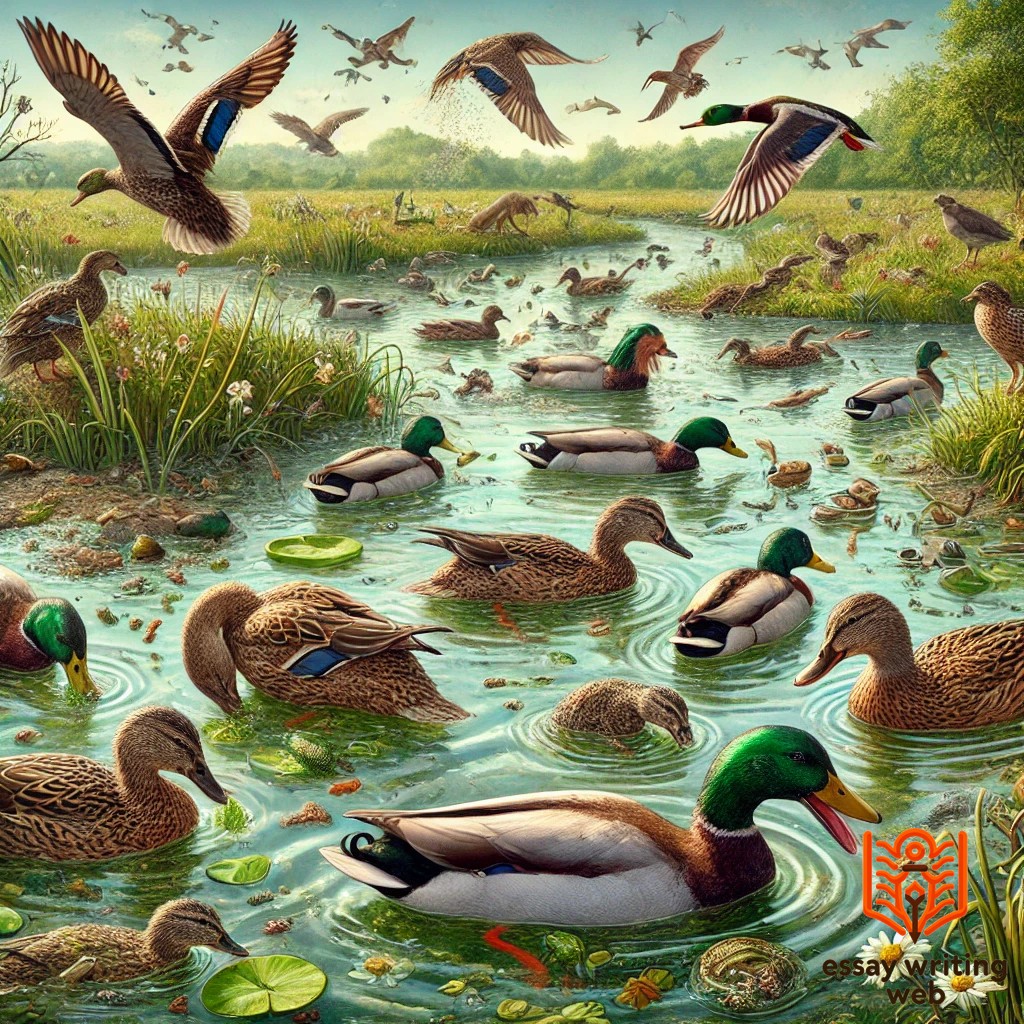
Ducks have had a long and varied relationship with humans, serving as a source of food, inspiration, and companionship. This connection has influenced both human culture and the natural world, making ducks an integral part of many societies.
One of the most prominent ways ducks benefit humans is through agriculture. Domesticated ducks, such as the Pekin and Muscovy breeds, are raised for their meat, eggs, and feathers. Duck farming is a significant industry in many parts of the world, providing a sustainable source of food and materials. Duck eggs are highly prized for their rich flavor, while duck feathers, especially down, are used in clothing and bedding for insulation.
In addition to their agricultural value, ducks play an important role in pest control. By feeding on insects, particularly those that thrive in wetland areas, ducks help farmers and gardeners manage pest populations naturally, reducing the need for chemical pesticides.
Ducks have also been a source of cultural and artistic inspiration. Their presence in myths, folklore, and literature reflects their role in human imagination. In many cultures, ducks symbolize adaptability and resourcefulness, qualities admired by humans.
Furthermore, ducks have become popular pets and animals for public enjoyment in parks and lakes. Their friendly demeanor and sociable nature make them a favorite among bird enthusiasts.
However, the relationship between humans and ducks also requires responsibility, especially in the face of habitat destruction and overhunting. Conservation efforts have been made to protect wild duck populations, ensuring that this important relationship continues to benefit both species for generations to come.

Ducks are increasingly popular as both pets and farm animals, valued for their friendly nature, practical benefits, and low maintenance. While traditionally associated with farming, ducks are now becoming common companions in homes, especially among bird enthusiasts.
As pets, ducks offer a unique and engaging experience. They are sociable, intelligent creatures that can bond with humans. With proper care, ducks can thrive in domestic environments. Pet ducks need access to clean water for swimming and bathing, a secure outdoor space for exercise, and a balanced diet of grains, vegetables, and insects. Their playful personalities and distinct quacking make them enjoyable companions. However, it is important to provide them with ample space and companionship, as ducks are social animals that thrive in groups.
On farms, ducks are valuable animals for their practical contributions. They are raised for their meat, eggs, and feathers. Duck eggs are larger and richer than chicken eggs, often sought after for baking and gourmet dishes. Additionally, ducks serve as natural pest controllers, feeding on insects and larvae that could harm crops. Their ability to forage in wetlands and rice fields makes them an excellent addition to integrated farming systems, where they help maintain ecological balance.
Ducks are also relatively easy to care for on farms. They are hardy animals, able to withstand various climates and conditions. With their ability to provide food, feathers, and pest control, ducks have become an essential part of sustainable farming practices worldwide. Whether as pets or farm animals, ducks bring joy and practical value to human lives.
